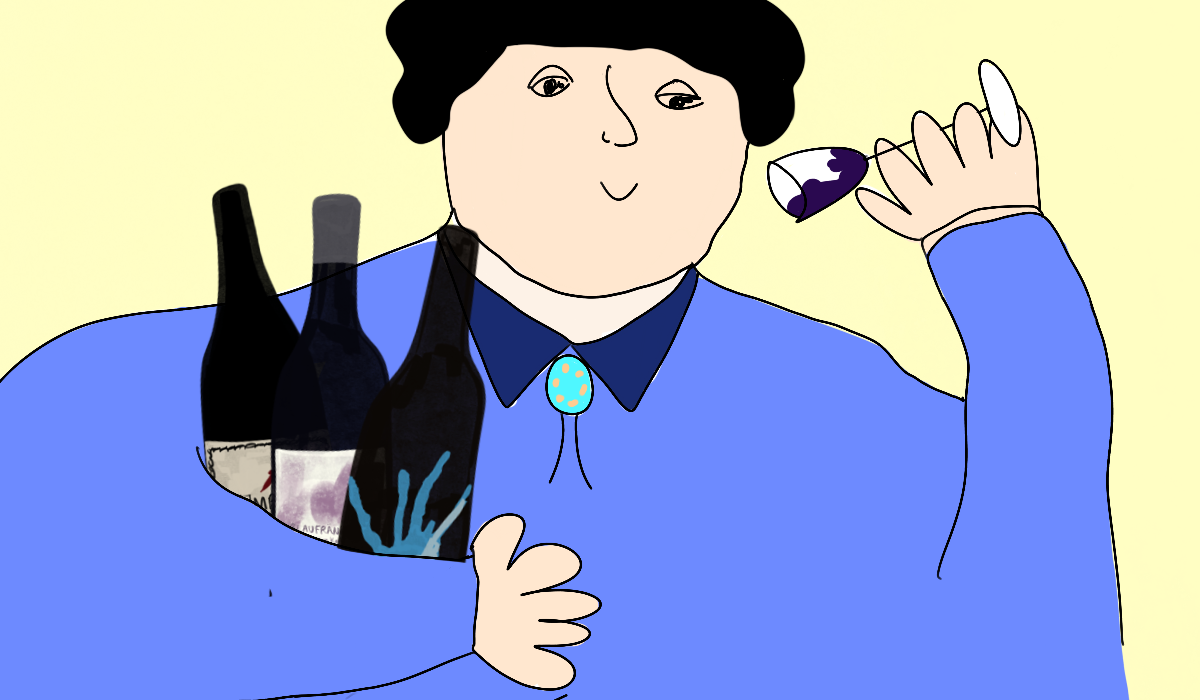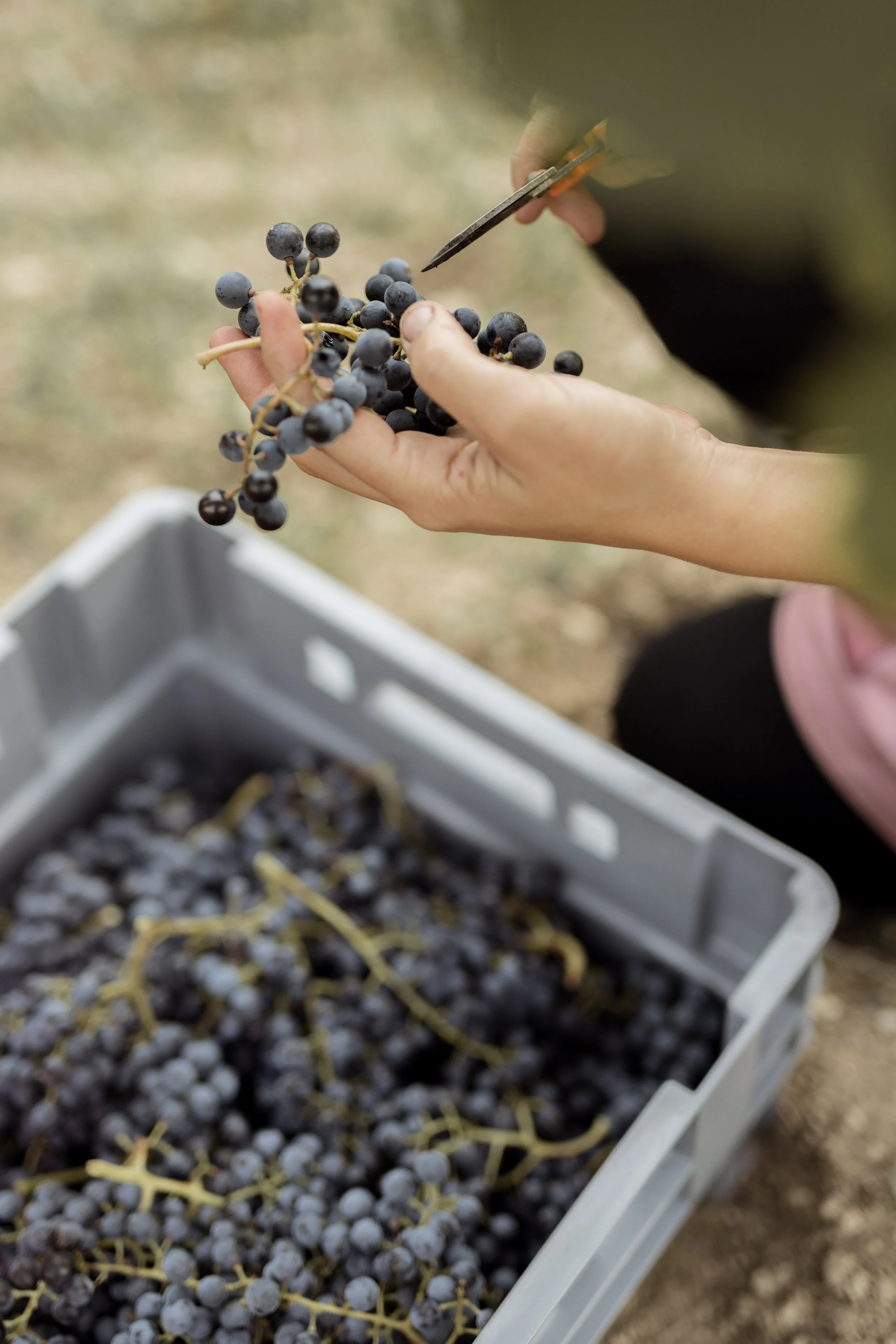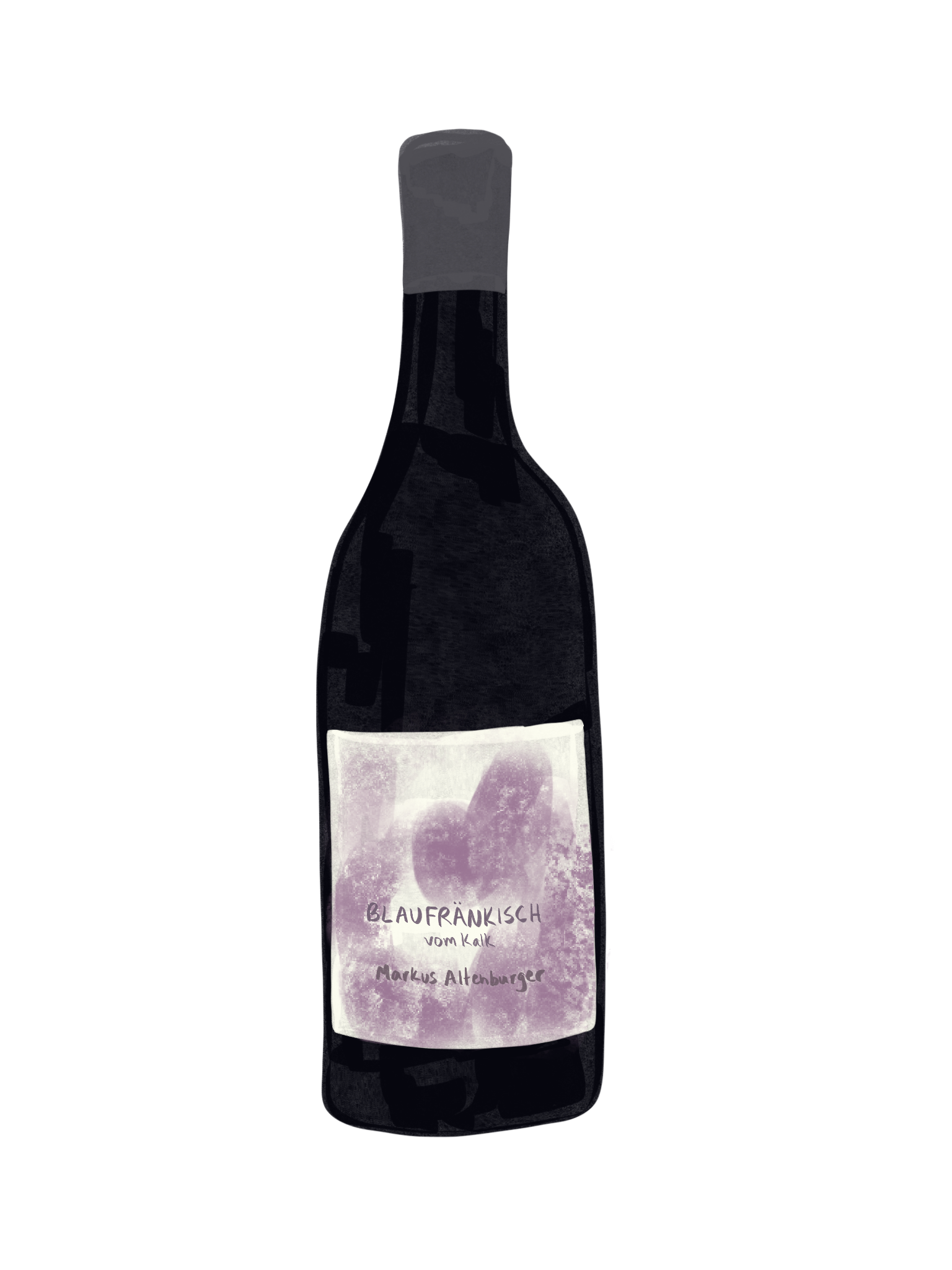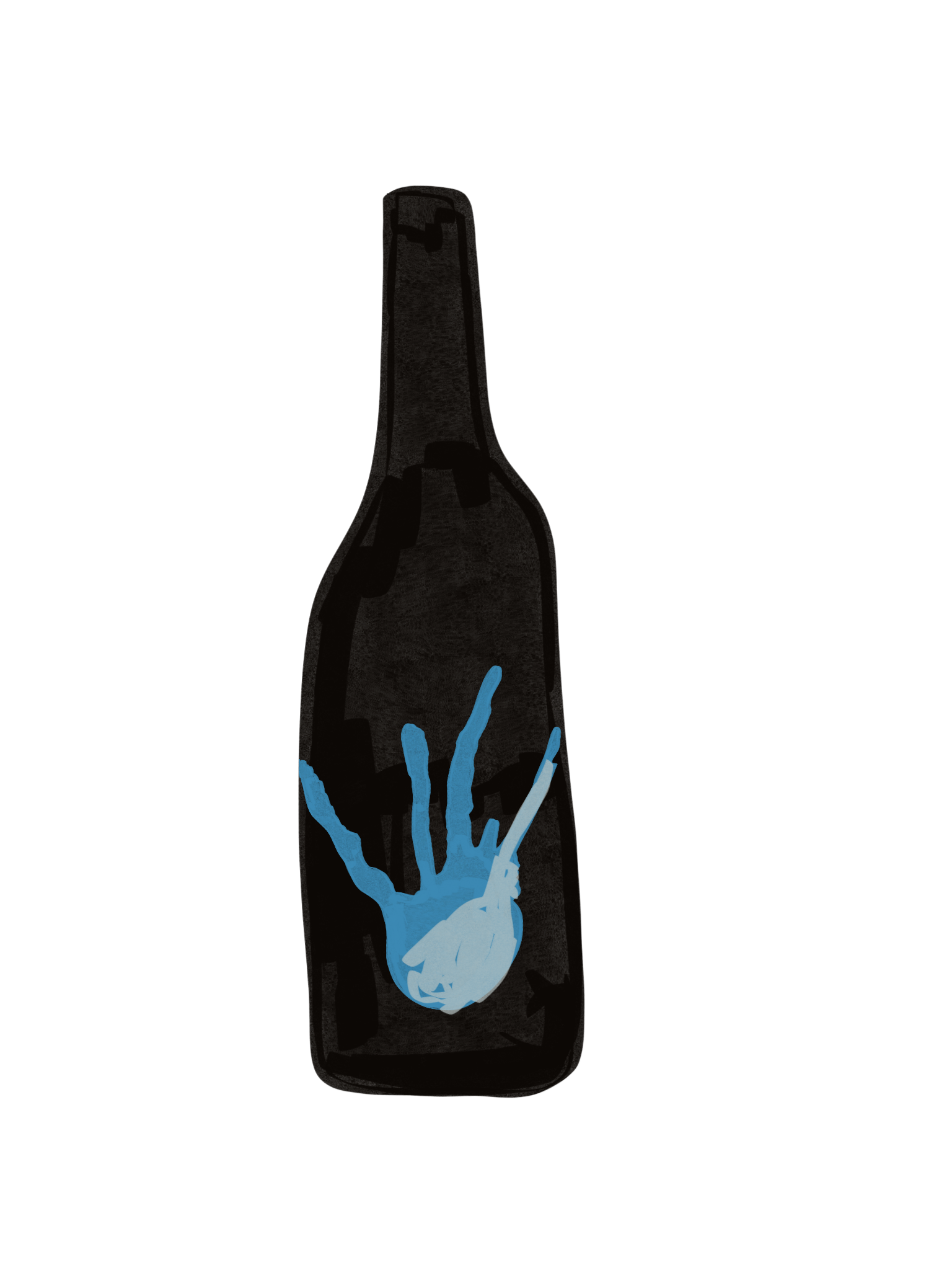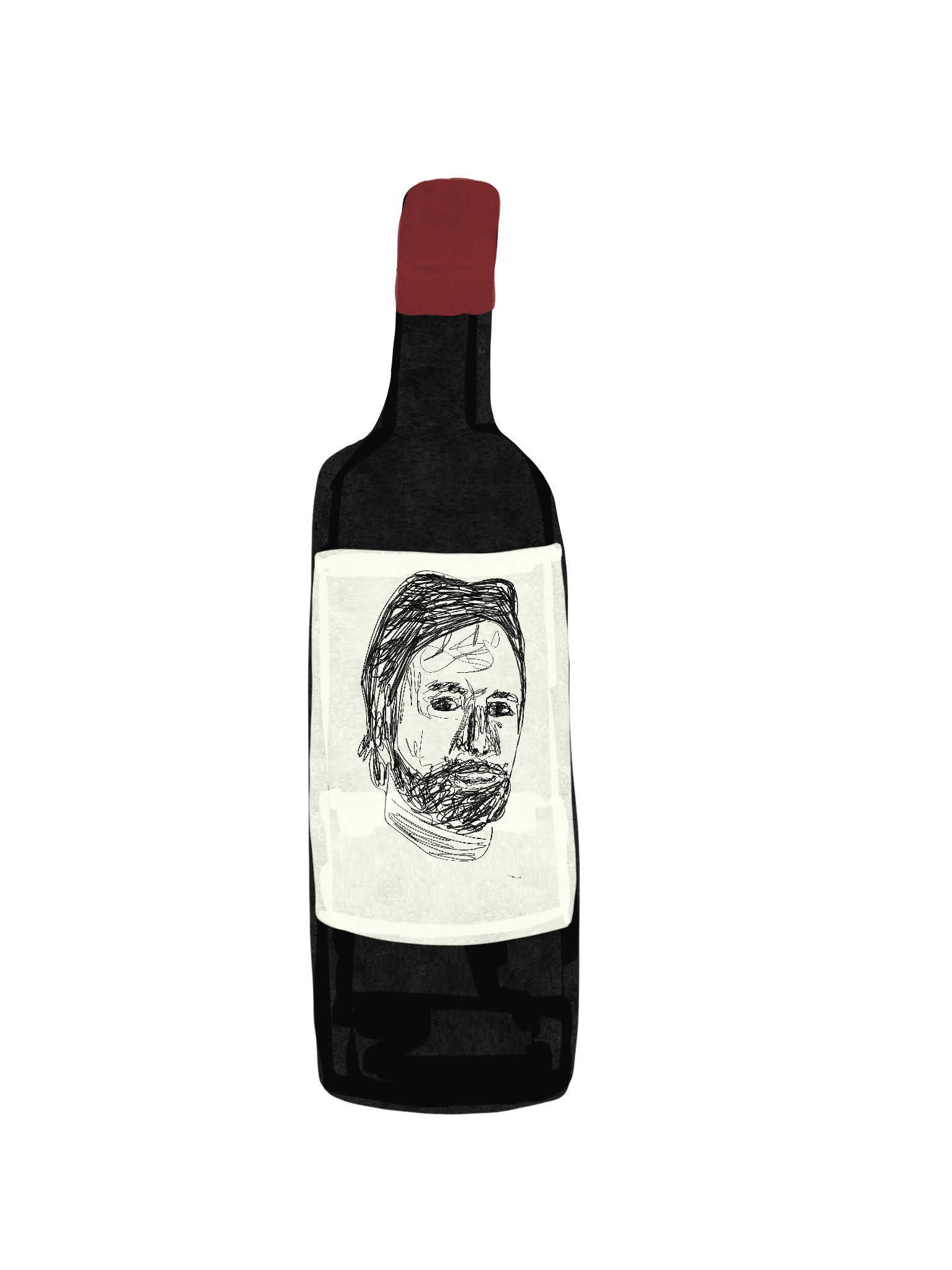Why Aren't We Giving Blaufränkisch More Air Time?
An overdue homage to your favorite growers’ favorite grape.
Written by Sophie Dodd
It’s spitting rain in Jois, a small town in Austria’s Burgenland, and I’m snacking on a cluster of sweet-spicy Blaufränkisch plucked straight from the vine. Crouched beside me is Markus Altenburger — a devoted disciple of this under-appreciated varietal, as well as the winemaker who first introduced me to its magic.
“It's really something historic,” he says, gazing at the blue-hued grapes before popping one into his mouth. While the name Blaufränkisch wasn’t recorded in Austria until 1862, the varietal’s history appears to stretch back to the Middle Ages, where it was likely planted across neighboring territories under local synonyms like Kékfrankos in Hungary; Frankovka in the Czech Republic, Croatia, and Serbia; and Modra Frankinja in Slovenia.
These countries’ borders have stretched and shifted in response to centuries of conflict, so it’s difficult — fruitless, even (wink, wink) — to pinpoint the grape’s precise provenance. Far more interesting at present, then, is how it’s captivating winemakers from Burgenland to the Balkans and beyond. You can even find clones in New York state.
And yet Blaufränkisch’s reputation hardly precedes it. While technically a parent grape of Gamay and Zweigelt, it’s often referred to as the Pinot Noir of the East — a reductive comparison. Sure, there’s architectural and sensory overlap — but while Blaufränkisch can be fresh and sanguine like a Pinot, it also broods with darker fruit and nervier acidity, plus a peppery kick that often gets it likened to Syrah.
“We always try to make comparisons with other grapes that are more common or more well known, but I stopped doing this a few years ago,” Altenburger says. “I want people to drink Syrah and think, ‘This tastes like Blaufränkisch,’ and not the other way around.”
In turn, according to growers themselves, here’s what you need to know about your favorite winemaker’s favorite grape.
Overcoming a ‘Rustic’ Reputation
“History didn't do Blaufränkisch justice,” says Marek Uhnák of Pivnica Čajkov, who farms Blaufränkisch on volcanic soils in Slovakia. “During communism, the grape was ‘disfigured’ because production was all about quantity instead of quality.” By the 1990s, its reputation hadn’t changed much. Growers in the region were drawn to popular foreign varietals like Cabernet Sauvignon, while Blaufränkisch had faded into the background.
“We still somehow knew that the fact that our ancestors planted Blaufränkisch here was no coincidence, and it gradually dawned on us that planting other grapes wasn't the best choice,” says Uhnák, adding that even in the hands of a mediocre winemaker, Frankovka (Slovakian Blaufränkisch) “always results in the most interesting wines.”
Markus Altenburger, Photography by Kristina Leidenfrostova ©
Today, the trouble is in getting people to see these wines for what they are: a far cry from their dense, purple, over-extracted predecessors, many of which were farmed with chemicals and additives to secure production.
“Frankovka was desecrated in the past because wines of poor quality were made with it, mostly from high yields,” says Milan Nestarec, a star winemaker in Moravia, Czech Republic, who’s been organically farming his family’s vines since he was just 16. “Some people may have encoded in it that it’s a wine that is light in taste and for everyday drinking. But this has been changing intensively here for the last 5-10 years,” he explains.
Uhnák remarks upon this same shift, noting that the perception of the grape as “rustic” is outdated. “For me, ‘rustic’ is in the past, and I hope that Frankovka evokes in people what she truly is: a noble grape capable of great depths and lengths when we give her the chance to shine.”
So, what does Blaufränkisch actually taste like?
Cherries, for starters; but the wine can lean more towards fruit punch or a velvety, full-bodied red. It can be delicate or muscular, energetic and juicy, or brooding and spicy; it all depends on the region, the soil, and the vinification process.
Altenberger breaks the essentials down into three parts: “acidity, cherry, and some tannins.” But the beauty of Blaufränkisch, especially for a self-proclaimed soil nerd like him, is how keenly it expresses its terroir. “Not all the grapes do that,” he says. “Some are so aromatic that they cover the taste of the terroir, but Blaufränkisch is not.” Working primarily with schist and limestone soils, Altenburger says the latter is his preference, as it brings out “a really nice saltiness” in his Blaufränkisch.
Vinification techniques also have a profound impact on the wine’s character. “With Blaufränkisch, you can do almost anything,” says Judith Beck, a biodynamic winemaker in Gols, Burgenland, with a fierce passion for local red grape varietals. “I really like whole cluster maceration — you get very nice herbaceous flavors together with the fruit flavors of the Blaufränkisch.”
Blaufränkisch in a Changing Climate
As winemakers grapple with the climate crisis, there are certain hardy grape varietals that appeal more than ever — and thick-skinned Blaufränkisch is a favorite among them.
For Stephanie and Eduard Tscheppe, the celebrated biodynamic winemakers behind Gut Oggau, based in the tiny village of Oggau, Burgenland, Blaufränkisch and its hybrids are the primary red varietals with which they work.
“It's a late varietal, which actually is a good thing given that the vegetation period is getting shorter and shorter and everything is getting more intense,” they say. “Also, the good thing about Blaufränkisch is it’s not super sensitive to diseases compared to other varietals. So there's a certain strength, a resilience to that grape varietal more than, say, typical Zwigelt.”
It’s ‘A Sin’ to Drink Blaufränkisch Young
“Blaufränkisch gets a lot better with age,” says Beck, who uses amphoras to age some of her cuvées. “Also in the cellar it just takes time until it shows its full potential, whereas with Zwigelt, for example, after the fermentation you already know what you’ve got,” she explains.
While the variety can certainly be used in thirst-quenching, everyday wines, patience is a virtue that Blaufränkisch rewards. “It has everything that it takes for aging. It has the acidity, it has good tannins, it has a perfect structure. So I think it's perfectly ageable,” says Beck.
Nestarec is aligned — in fact, he claims drinking Blaufränkisch young is a waste of the wine’s potential. “Frankovka is a variety that can age beautifully and develop tertiary. It is a sin to drink Frankovka young,” he says. “It needs a lot of work in the vineyard and a lot of time in the cellar and in the bottle. But when it works, it's brilliant.”
A Bright Future for Blaufränkisch
Sure, French varietals once seduced the attention of growers across Central and Eastern Europe (heck, across the world), but these days, those growers are quite passionately wedded to their native grapes, like Blaufränkisch.
“Frankovka is our future, I don't like to see neighboring slopes planted with Merlot,” says Nestarec. “The future here belongs to Frankovka, not Pinot Noir and certainly not Cabernet Sauvignon. The world is full of these wines.”
As the grape’s popularity spreads — there’s already a whole swath of Burgenland known as Blaufränkischland (aka my personal Eden) — it delights me to think that one day, there’ll be no more need for French qualifiers, no more talk of the Pinot of the East; Blaufränkisch will finally speak for itself.
Our recommended Blaufränkisch starter pack
For the best chance at love at first sip — and to experience the striking range of Blaufränkisch’s possibilities — start off with these bottles from some of our favorite producers.

